May 26, 2025
Author:Jackson Watson

It might look harmless in the beginning. A quick swat, a twitch, maybe a meow that sounds a little off. Then you spot it—your cat rubbing their face like something’s wrong. Swelling creeps in fast. Breathing gets shallow. And just like that, a simple sting turns serious.
Bees don’t always hit us the same way they hit our pets. What looks like a tiny welt can go sideways fast if your cat reacts badly to the venom. But here’s the tricky part—not every sting needs an emergency call. Some do. Some don’t.
This guide lays it all out clearly—what signs to watch for, what to do right away, and how to stay ahead of any danger. Skip the panic. Get answers that actually help.
Here’s what you’ll walk away with:
● How to spot the sting before it gets worse
● Immediate steps to take—even if you’re unsure
● Warning signs that signal a serious allergic reaction
● Safe home remedies vs. when to skip them
● And much more!
You’re not overreacting. And you’re definitely not alone.
At first glance, it might not look like much. A little twitch. A soft paw to the face. Maybe your cat seems a bit more annoyed than usual.
But then the swelling kicks in—and suddenly, things feel a lot more serious.
Bee stings don’t always make a big entrance. They creep up. And if you’re not paying close attention, you could miss the early warning signs. That’s when the sting gets a head start—and your cat falls behind.
Unless you catch it happening, figuring it out isn’t always obvious. But most cats get stung in the same few spots—the ones they stick in bees' business without meaning to.
Keep an eye out for signs like:
● Puffiness around the face, especially near the nose, lips, or eyelids
● Licking or scratching at the same area over and over
● A sudden yelp or twitch, especially after outdoor time
● A red bump or welt (sometimes with the stinger still sitting there)
● Acting off—maybe pacing, maybe hiding, maybe unusually restless
If you suspect a sting, don’t search randomly. Start where it makes the most sense:
● Nose and muzzle—most cats get stung here when they sniff too close
● Paw pads or between the toes—especially if they were swatting at something
● Belly and inner thighs—if your cat had been lounging in the grass
Catching it early gives you options. Wait too long, and the reaction takes control. Your cat’s comfort—and sometimes their safety—depends on how soon you notice.
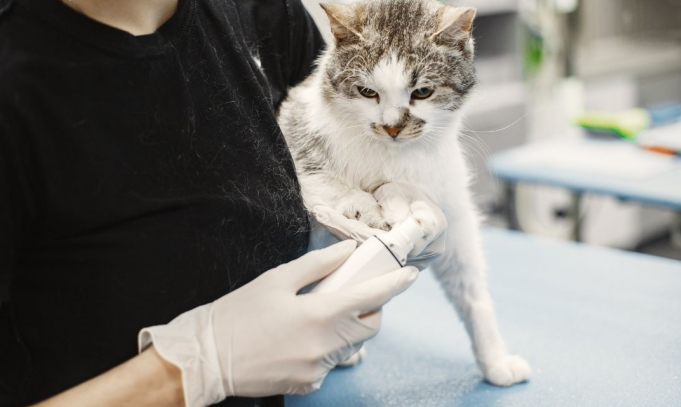
Even if you’re not 100% sure it was a bee, hesitation can cost you time your cat doesn’t have. Mild stings are uncomfortable. Severe ones can turn dangerous within minutes.
Don’t wait for confirmation. Act first. Assess later.
These steps are safe, fast, and won’t cause harm, even if it turns out not to be a bee sting.
● Keep your cat calm and contained: Movement spreads venom faster. Pick them up gently and move them indoors, away from more insects.
● Look for a stinger: Bees leave their stingers behind. Use a rigid edge like a credit card to scrape it out sideways. Don’t pinch it. That can push more venom in.
● Apply a cold compress: Wrap an ice pack in a towel and press it lightly against the swollen area. Hold for a few minutes, then pause. This slows down inflammation.
● Watch their breathing and behavior: Any panting, drooling, limping, or collapse is a red flag. If that shows up, skip the next steps and call your vet immediately.
● Avoid human medications: Antihistamines or painkillers made for people can backfire. Always check with a vet first.
To calm your cat and channel their energy, think about providing them with the WOpet Scratching Post. Constructed with resilient sisal rope and a robust base, it offers a secure option for scratching and stretching. The integrated toys and perches captivate your cat, fostering relaxation and lowering stress levels. Its sleek design conveniently fits in any room, providing a special area for your cat to relax and have fun
Most of the time, a sting leads to some swelling, a bit of soreness, maybe a grumpy cat for a few hours. But once in a while, things don’t stop there—and they can shift quickly.
One minute your cat’s pacing or hiding. The next, they’re struggling. That window can close fast.
If you notice any of the following, don’t wait it out. Get your vet on the phone right away. These symptoms mean your cat needs medical attention—no exceptions:
● Labored breathing — Wheezing, open-mouth breathing, or short, fast breaths may mean their airway is narrowing.
● Swelling that spreads — If it moves beyond the sting area, especially around the throat or face, it could be a serious allergic reaction.
● Vomiting or diarrhea — The venom can affect more than the skin. Stomach upset with other signs? That’s a red flag.
● Sudden collapse or extreme fatigue — If your cat becomes limp, stumbles, or can’t stay upright, skip everything else and call the vet.
● Seizures or trembling — These could mean the nervous system is reacting. Don’t wait. Get help.
Quick action doesn’t just help—it can change the outcome entirely. If something feels off, trust your gut and make the call. Better safe than scrambling later.
Not every bee sting needs a vet visit. But not every home remedy helps either. Some treatments soothe. Others make things worse. The key is knowing where that line is—and not crossing it.
These are low-risk steps that ease mild symptoms and support recovery:
● Cold compress: Ice wrapped in a cloth reduces pain and swelling. Apply in short intervals—5 minutes on, 10 minutes off.
● Baking soda paste: Mix water with a small amount of baking soda and dab it onto the sting. This may help neutralize mild surface irritation.
● E-collar or soft cone: Use this if your cat keeps licking or scratching the sting site. It prevents self-inflicted damage.
● Keep them hydrated and indoors: Quiet, familiar surroundings reduce stress and help the body settle.
Avoid guessing with these:
● Antihistamines made for humans: Even a small dose of the wrong one can be toxic. Never give Benadryl or similar products without a vet’s guidance.
● Essential oils or creams: Many are harmful to cats, even when used topically. Skip anything with menthol, eucalyptus, or tea tree.
● Aspirin or ibuprofen: These can cause liver or kidney damage in cats. Pain meds must come from a professional.
When in doubt, choose the safer road. Relief shouldn't come with added risk.
Bee stings aren’t random. Most happen because cats get curious at the wrong time, in the wrong place. You can’t bubble-wrap the backyard—but you can make smart moves that lower the risk significantly.
Bees show up for a reason. If your space keeps inviting them, your cat stays at risk.
● Avoid planting flowers near patios or walkways: Especially bright blooms and herbs—those pull pollinators in fast.
● Keep outdoor feeding areas clean: Leftover kibble or wet food attracts insects. Always clear the bowls after meals.
● Cover garbage bins tightly: Sweet or fermenting smells lure bees. Closed lids are your first defense.
Freedom doesn't have to mean exposure.
● Limit outside time during peak bee hours: Bees are busiest in late morning and early afternoon. Shift playtime earlier or later.
● Use screened enclosures or pet tents: These let your cat enjoy fresh air without direct insect contact.
● Redirect curiosity indoors: Stimulate their hunting drive with toys, puzzles, or a WOpet Smart Feeder that schedules interactive treat sessions. It gives them something better to chase.
Cats and bees don’t mix well. But with a few changes, you can help your cat stay curious, without getting stung for it.
Bee stings can catch you off guard—but you don’t have to stay unprepared. You now know what early signs to look for, how to take action fast, and when a sting moves from harmless to serious. That knowledge alone can protect your cat from unnecessary pain, panic, or worse.
But prevention matters just as much as treatment. Keeping your environment sting-safe and using tools that help you monitor and manage symptoms remotely, like WOpet’s smart feeders and pet tech, adds one more layer of peace of mind. You stay in control, even when you're away.
Let’s recap what you’ve learned:
● How to spot the sting early before it spreads
● What immediate actions to take, even without a vet on speed dial
● Signs of a serious allergic reaction that need professional help
● Which home remedies are safe, and which ones can do more harm than good
● Practical ways to prevent future stings, both inside and out
● How WOpet’s smart tools can support real-time pet care, from feeding to monitoring symptoms
Stings are scary, but they don’t have to catch you off guard again. Let your cat stay curious—and let WOpet help you stay ready.
Label:
Popular Post

What to Feed a Sick Dog With No Appetite? [2025 Guide]
May 16, 2023
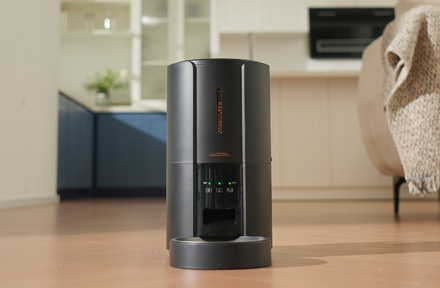
Troubleshooting Common Issues with Automatic Pet Feeders: Tips & Tricks for Pet Owners
Oct 26, 2023
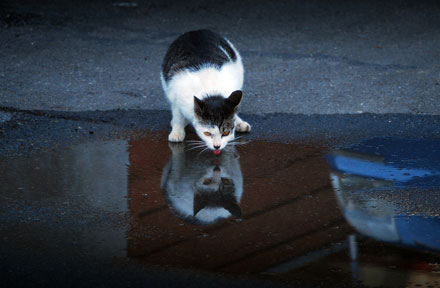
Why Does My Cat Cough After Drinking Water? 8 Potential Reasons
Mar 13, 2023
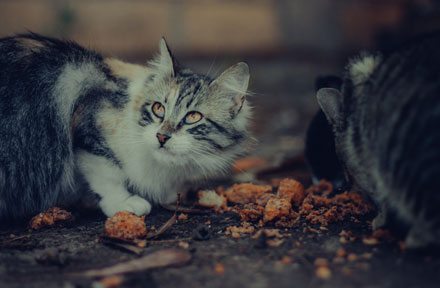
My Cat Only Eats A Little at A Time - What to Do?
Feb 27, 2023
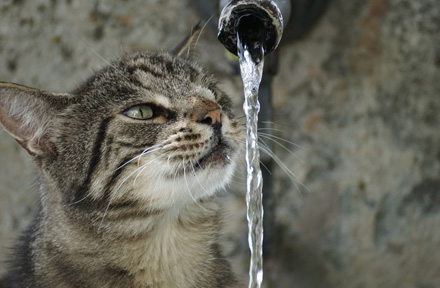
Why is My Cat Throwing up Water? Top 5 Causes Here
Feb 08, 2023
$99.99
$129.99
Copyright © 2025 WOPET. All Rights Reserved.